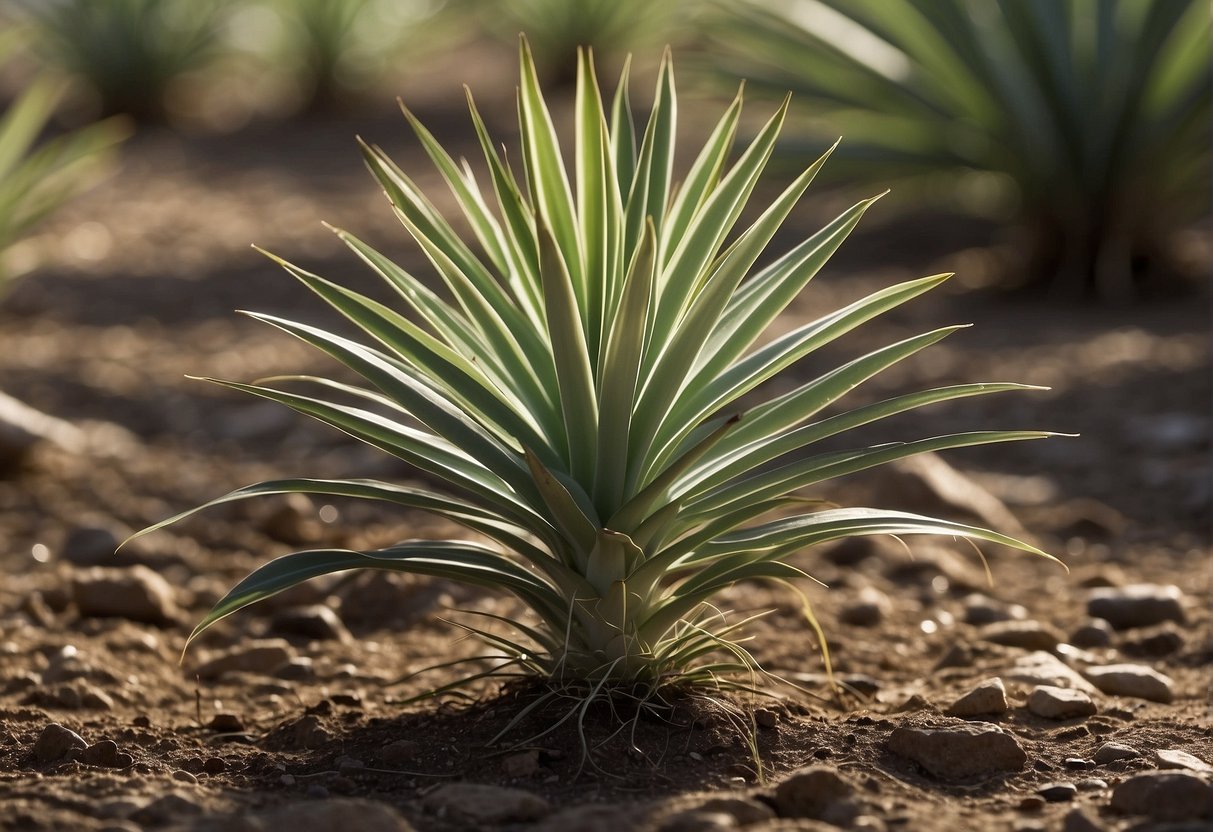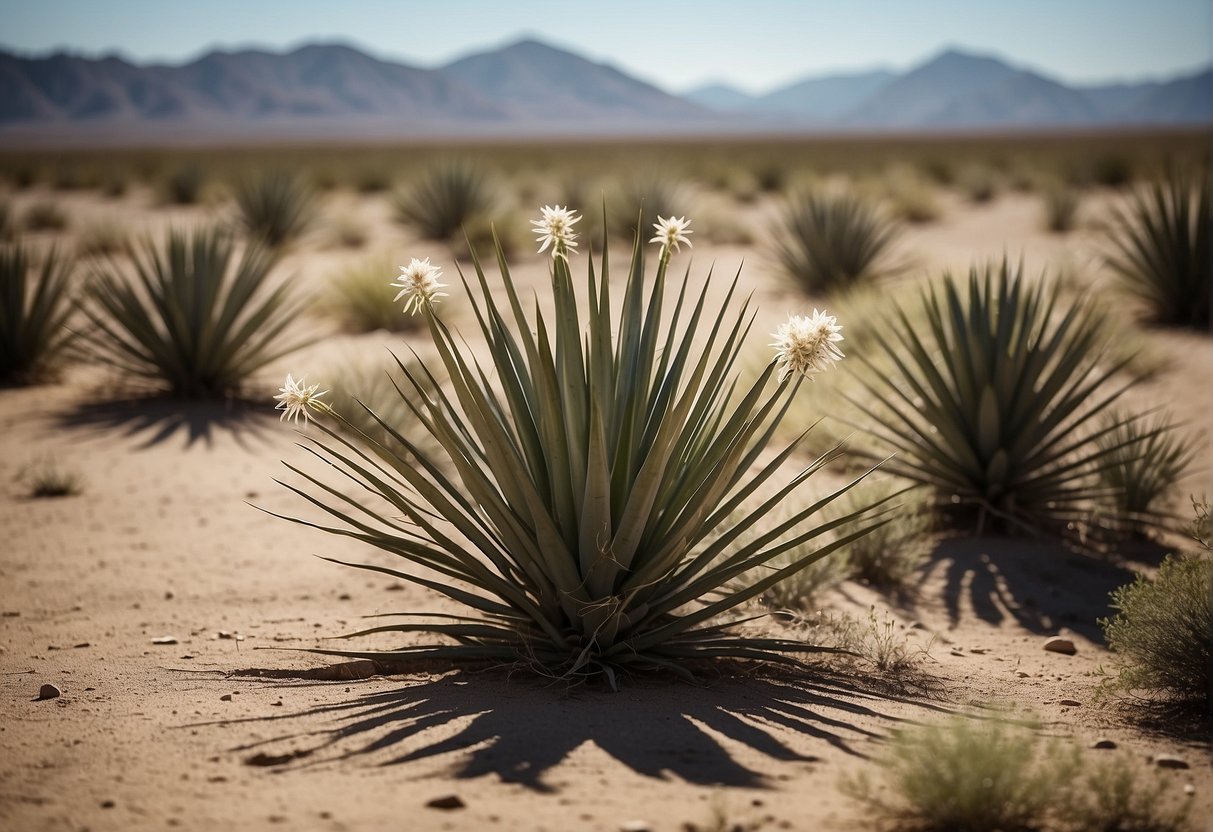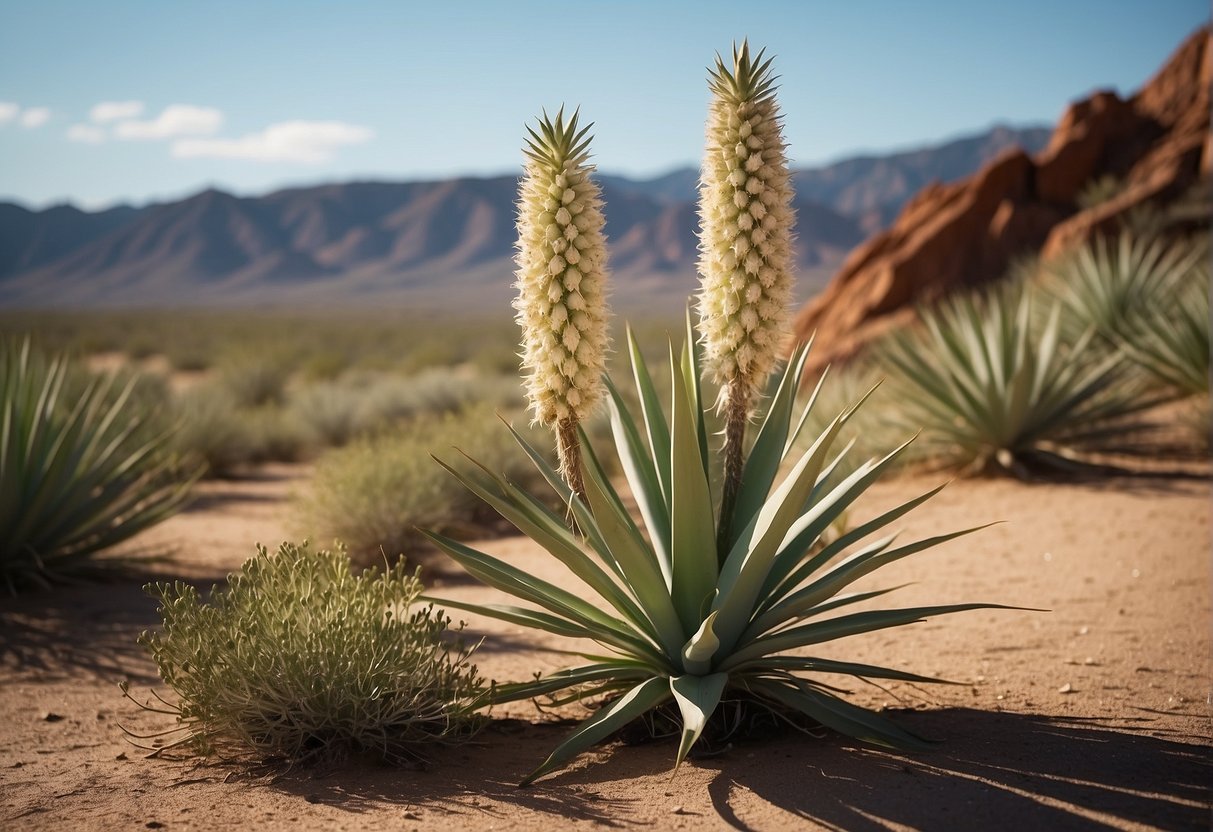What is a Yucca Plant’s Adaptation: Understanding the Unique Survival Strategies of Yucca Plants
If you’ve ever explored the dry areas of North and Central America, chances are you’ve come across a yucca plant. These resilient flora stand out due to their distinctive, sharp leaves and tall stalks adorned with flowers. Moreover, yucca plants are not only visually appealing but they also serve as intriguing demonstrations of adaptive evolution in the natural world.

Yucca plants are well-adapted to life in the desert, where water is scarce and temperatures can soar to extreme heights. In this article, we’ll explore the unique characteristics of yucca plants that allow them to thrive in such harsh conditions. From their specialized root systems to their symbiotic relationships with yucca moths, we’ll take a closer look at the adaptations that make yucca plants such successful survivors.
Key Takeaways
- Yucca plants are well-adapted to life in arid environments, where water is scarce and temperatures can be extreme.
- Yucca plants have a number of unique adaptations that allow them to survive in these conditions, including specialized root systems and symbiotic relationships with yucca moths.
- By understanding the adaptations of yucca plants, we can gain a deeper appreciation for the incredible resilience of desert ecosystems.
Yucca Plant Characteristics
Yucca plants are known for their unique adaptations that allow them to thrive in harsh environments. Here are some of the physical attributes and species diversity of yucca plants.
Physical Attributes
Yucca plants are characterized by their rosette of sharp, spiky leaves that grow in a spiral pattern. The leaves are often tough and fibrous, which helps to protect the plant from predators and conserve water. Some yucca species can grow up to 30 feet tall, while others remain small and compact.
The white flowers of the yucca plant are another defining feature. These flowers are often large and showy, and they can attract a variety of pollinators, including moths and bees. Some yucca species, such as the Joshua tree, are particularly famous for their unique flowers.
Species Diversity
There are over 40 different species of yucca plants, each with its own unique characteristics. Some of the most common yucca species include the Spanish bayonet, Adam’s needle, and the Joshua tree. While many yucca plants are native to the Americas, some species can be found in other parts of the world, such as the Caribbean and Africa.
Yucca plants can take on a variety of forms, from small shrubs to towering trees. They are also known for their ability to adapt to different environments, from deserts to grasslands. Despite their diversity, all yucca plants share certain characteristics, such as their flowering rosettes and sharp leaves.
Overall, the characteristics of yucca plants make them fascinating and unique additions to any landscape. Whether you are looking for a hardy plant to survive in harsh conditions or simply want to add some variety to your garden, yucca plants are a great choice.
Adaptations to Arid Environments

Yucca plants are well-known for their ability to thrive in arid regions. These plants have evolved several adaptations that allow them to survive in harsh, dry environments. Some of the most important adaptations of yucca plants are discussed below.
Water Conservation Strategies
One of the most important adaptations of yucca plants is their ability to conserve water. Yucca plants have a unique root system that allows them to store water in their roots. This helps them survive during periods of drought when water is scarce. Additionally, yucca plants have well-draining soil that allows water to quickly drain away from the roots. This helps prevent the roots from becoming waterlogged, which can lead to root rot.
Yucca plants also have a mechanism for reducing transpiration, which is the loss of water through the leaves. The leaves of yucca plants are thick and waxy, which helps reduce water loss. Additionally, yucca plants often grow in clusters, which helps create a microclimate that is more humid than the surrounding environment. This can help reduce water loss through transpiration.
Reproductive Adaptations
Yucca plants have evolved several adaptations to ensure successful reproduction. One of the most interesting adaptations is the relationship between yucca plants and yucca moths. Yucca moths are the primary pollinators of yucca plants. The female yucca moth collects pollen from one yucca plant and then flies to another yucca plant to lay her eggs. She deposits the pollen on the stigma of the second plant, which fertilizes the ovules. The larvae of the yucca moth then feed on the developing seeds.
Yucca plants have also evolved a unique reproductive strategy called “mast flowering.” This strategy involves the production of a large number of flowers in a single year, followed by several years of little to no flowering. This allows yucca plants to conserve resources during periods of drought and then produce a large number of seeds when conditions are favorable.
In conclusion, yucca plants have evolved several adaptations that allow them to survive in arid environments. Their unique root system, water conservation strategies, and reproductive adaptations have helped them thrive in deserts and other dry regions.
Frequently Asked Questions

How do yucca plants survive in arid conditions?
Yucca plants are able to survive in arid conditions due to their unique adaptations. They have thick, waxy leaves that help to reduce water loss through transpiration. Additionally, they have a deep root system that allows them to access water deep underground. Yucca plants also have the ability to store water in their stems, which can be used during times of drought.
What are the physical adaptations of a yucca plant?
Yucca plants have several physical adaptations that allow them to thrive in arid environments. One of their most notable adaptations is their rosette of sharp, pointed leaves. These leaves help to protect the plant from herbivores and also help to reduce water loss. Yucca plants also have a thick, woody stem that helps to support the plant and store water.
How have yucca plants evolved to thrive in desert ecosystems?
Yucca plants have evolved a number of adaptations that allow them to thrive in desert ecosystems. For example, they have developed a symbiotic relationship with yucca moths, which are the only insects that can pollinate yucca flowers. Additionally, yucca plants have evolved to produce seeds with a hard outer coating that can survive in the harsh desert environment.
In what ways do yucca plants interact with their environment for survival?
Yucca plants interact with their environment in a number of ways to ensure their survival. For example, they rely on yucca moths for pollination, and they also rely on animals such as birds and bats to disperse their seeds. Yucca plants are also able to adapt to changes in their environment, such as drought or wildfires.
What survival strategies do yucca plants employ?
Yucca plants employ a number of survival strategies to ensure their survival in arid environments. For example, they are able to store water in their stems and leaves, which can be used during times of drought. They also have a deep root system that allows them to access water deep underground. Additionally, yucca plants are able to reproduce quickly, which allows them to quickly colonize new areas.
How do the roots of a yucca plant adapt to its habitat?
The roots of a yucca plant are adapted to its habitat in a number of ways. They are able to grow deep underground, which allows the plant to access water that is not available to other plants. Additionally, the roots of a yucca plant are able to store water, which can be used during times of drought. Finally, the roots of a yucca plant are able to form a symbiotic relationship with certain types of fungi, which can help to improve the plant’s ability to absorb nutrients from the soil.

